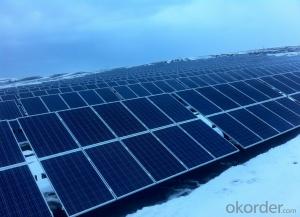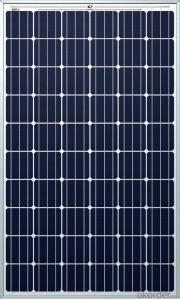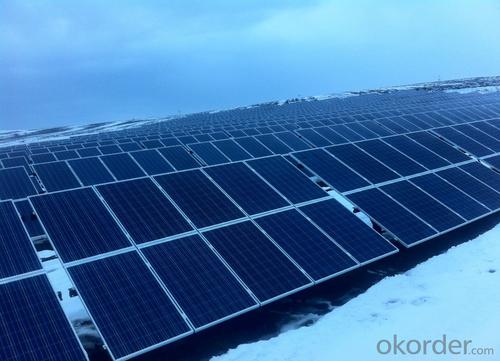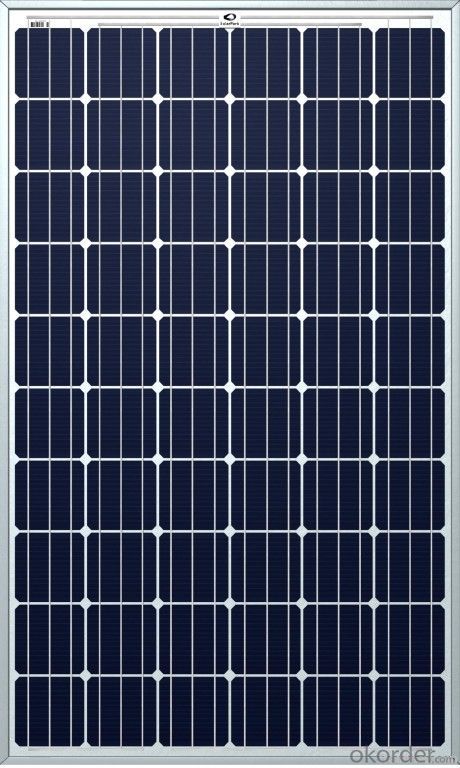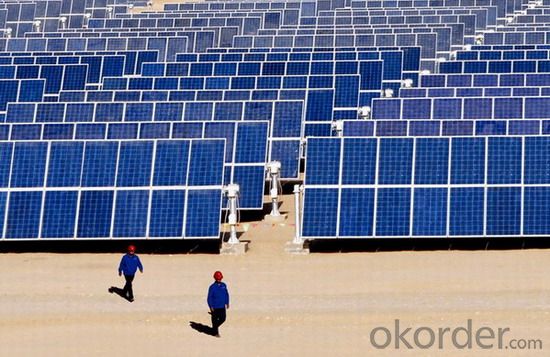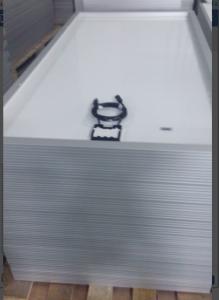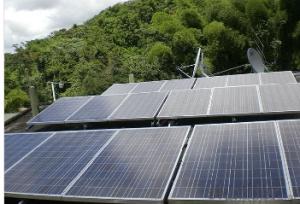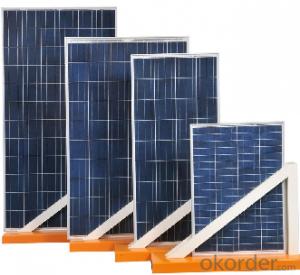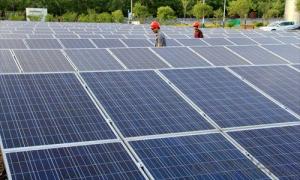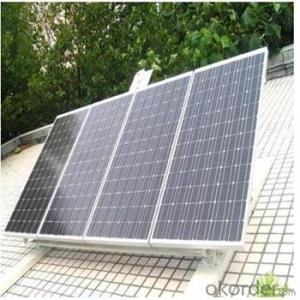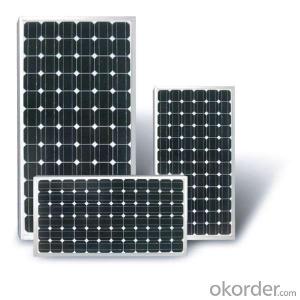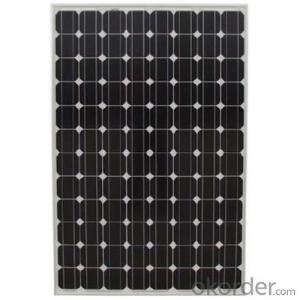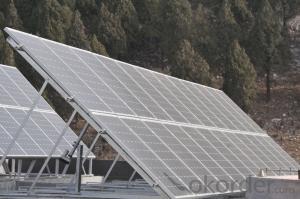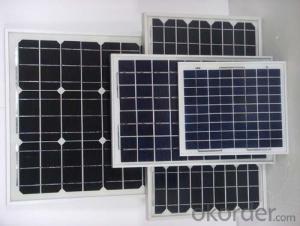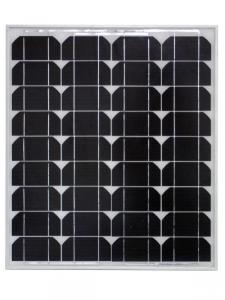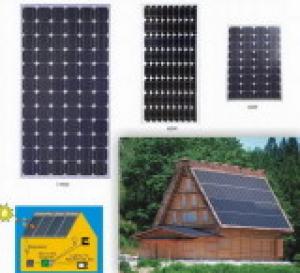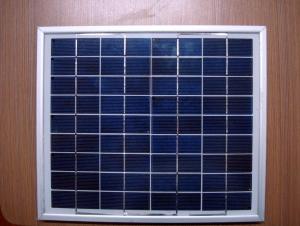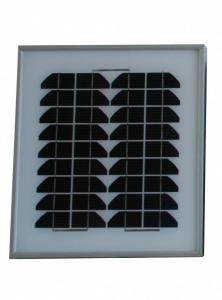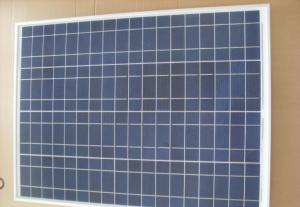Solar Panels in The Desert - Solar Monocrystalline 125mm Panel Series (45w-50w)
- Loading Port:
- China main port
- Payment Terms:
- TT OR LC
- Min Order Qty:
- 10000 watt
- Supply Capability:
- 100000000 watt/month
OKorder Service Pledge
OKorder Financial Service
You Might Also Like
Specification
Solar Monocrystalline 125mm Panel Series(20W-25W)
Product Description
1.High efficiency crystalline silicon solar cell. Even if under the weak light, the solar module can produce maximum power output.
2.Tempered glass (toughened glass): Anti-reflecting coating and high transmission rate glass increase the power output and mechanical strength of solar module.
3. EVA and TPT: Using high quality EVA and TPT to prevent destroying and water.
4. AI frame: Without screw, rner connection. 6 holes on the frame can be installed easily.
5. Junction box: Multi function junction box with water proof.
6. Long lifetime: ≥25 years; Less power decrease.
7. Good performance of preventing from atrocious weather such as wind and hails.
8. Resisting moisture and etching effectively, not effected by geology.
Details
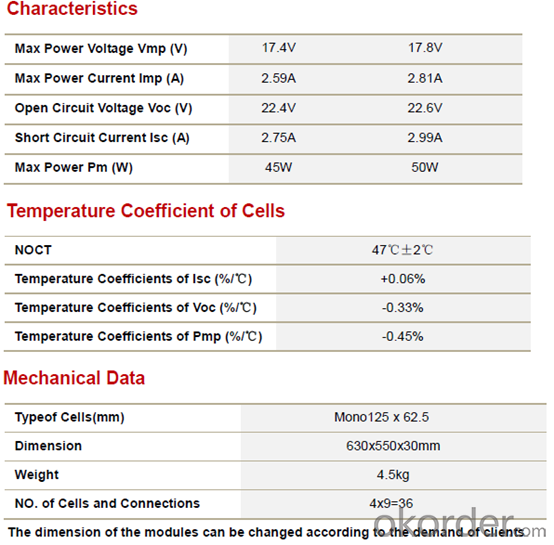
Certificate

Images
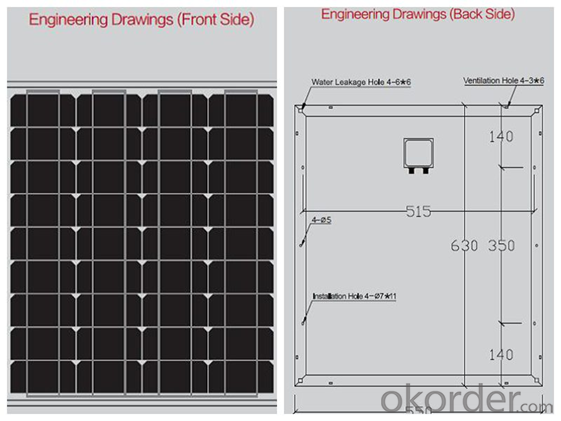
FAQ1
We have organized several common questions for our clients,may help you sincerely:
1.What price for each watt?
It depends on the quantity, delivery date and payment terms,
2.How do you pack your products?
We have rich experience on how to pack the panels to make sure the safety on shipment when it arrives at the destination.
- Q: What is the payback period for solar panels?
- The payback period for solar panels can vary depending on factors such as the initial cost of installation, location, energy usage, and available incentives. However, on average, solar panels tend to have a payback period of about 5 to 10 years.
- Q: I have a 500 watt inverter and battery but need solar panels to run my need. I want to have enough juice to run a computer and monitor and sometimes a 5w amp. I am not sure how much power is needed to run the computer (standard desktop with 5flat screen with an additional surround sound system) though on the side of the computer it says 5 amp but I know I used to run it and monitor and surround sound with a heating blanket on the same circuit which was rated at 20 amps. My question is that I would like to go and buy some panels (cheaply as I'm unemployed) from somewhere like Harbor Freight that would meet the need of the converter to supply enough amperage. So what size panel(s) or panels would I need to run this setup? If I am correct I think 500 watts is equal to 5 amps. Would this even work? Could I run a partial system where I could run some of the stuff to take a load off? I need to lower my electric bill somehow. Thanks!
- Solar okorder in their survival discussion in the archive, this exact project was discussed at length.
- Q: How do solar panels perform in extreme temperatures?
- Solar panels can still generate electricity in extreme temperatures, but their efficiency may be slightly affected. In high temperatures, solar panels may experience a decrease in their power output due to increased resistance in the electrical circuits. In extremely cold temperatures, solar panels may become less efficient temporarily, but they can still produce electricity as long as there is sunlight. Overall, while extreme temperatures can have a minor impact on solar panel performance, they are designed to withstand a wide range of weather conditions and continue to produce clean energy.
- Q: How do solar panels affect the property's curb appeal?
- Solar panels can enhance the curb appeal of a property by providing a modern and sustainable aesthetic. They showcase the homeowner's commitment to renewable energy, which is increasingly valued by prospective buyers.
- Q: They have been around long enough to be cheaper. Unless they are made out of a natural material that is rare and hard to find, there is no reason why they should be so expensive. On another note, I think that all low power devices like cell phones and even laptops should have solar panels. Even if it is not enough to fully power the device for a long period of time, it will provide some electricity savings and with millions of people saving a little power adds up.
- We all would love to have solar panels, I wish I could afford them for my house! The fact of the matter is that the amount of energy used to make solar panels doesn't really make it beneficial. They would have to have a better way of manufacturing them, a way that uses less energy. Basically they don't make up for the energy lost in their production .Despite our efforts there is no fuel like fossil fuel.
- Q: How do solar panels affect the homeowner's insurance policy?
- Solar panels can potentially affect a homeowner's insurance policy as they are considered an added feature or improvement to the property. The presence of solar panels may result in an increase in the insured value of the home, leading to higher insurance premiums. However, some insurance companies offer specialized coverage for solar panels, which may provide additional protection against damage or theft. It is advisable for homeowners to contact their insurance provider to discuss any necessary adjustments or coverage options related to their solar panel installation.
- Q: How to Compare Solar Panels? ?
- Each okorder may help you
- Q: Thinking about getting a solar panel installed but i'm worried about getting the govt. rebates. There is a Federal Tax credit and a State of Florida rebate and i'm wondering what the time frame is for getting the rebates. Has anyone gotten a solar panel installed recently that could give me more info.Thanks!
- Do not count on getting the rebate soon or if at all. You should get on the list and wait until the funds are released. Good luck. Summary: Note: There is currently a waiting list for rebates from the Solar Energy Incentives Program. This program has received $5 million in federal funding from the American Recovery and Reinvestment Act of 2009 (ARRA). This funding will be used to award rebates to some of the systems that are on the waiting list. The state has applied for an additional $9.4 million in federal funding for this rebate program. Systems applying for the rebate at the present time will be placed on the waiting list. If additional federal funded is received, the approved applications will be awarded rebates based on the order in which they were received. FY 2009-200 is the last year of the solar rebate program and the last year the program could be funded under current authorizing statute. Florida's Solar Energy System Incentives Program was established in June 2006 (SB 888) to provide financial incentives for the purchase and installation of solar energy systems from July , 2006, through June 20, 200. A total of $2.5 million was available for FY 2006-2007; $3.5 million was available for FY 2007-2008, and $5 million is available for FY 2008-09.
- Q: Since plants have been populating this earth for the past 475 million years I think they have evolved to gain the most sun with their greenery. If scientists used heat sensors to find the hot spots of trees and trim all of the leaves that don't quot;providefor the plant, then maybe that trimmed tree could be used to become a solar quot;panelquot;. I believe that each individual leaf could be replaced by a small solar panel and the wood of the tree would be wiring that would root all of the solar panels to a generator.
- From the vantage point of a scientist and an engineer, you have a whole host of problems to overcome. The mass of solar cells cannot be supported by most leaves much less allow the leaves to turn toward the sun as they naturally do. The wood and other structures of a tree are terrible conductors and wouldn't serve as efficient power transmitters. There are issues of damaging the health of the tree by interrupting the process of photosynthesis in favor of solar energy collection, and many other issues. However, I can tell you that solar power does use several principals that you have observed in trees. For example, solar collectors are almost always oriented to face toward the sun. Many adjust with the time of day and seasons to be optimally oriented to collect the sun's rays. Much like leaves in many plants are not static but change position to optimize their angle to the sun. Also, many solar cells are now designed with a membrane structure which offer several advantages. So you see many of your observations have found their way into practical application in solar power production.
- Q: What makes them stop working after a while?
- could be temperature, poor design and U-V damage If they are outdoor lamps like mine it is more likely the rechargeable batterys are bad.
Send your message to us
Solar Panels in The Desert - Solar Monocrystalline 125mm Panel Series (45w-50w)
- Loading Port:
- China main port
- Payment Terms:
- TT OR LC
- Min Order Qty:
- 10000 watt
- Supply Capability:
- 100000000 watt/month
OKorder Service Pledge
OKorder Financial Service
Similar products
Hot products
Hot Searches
